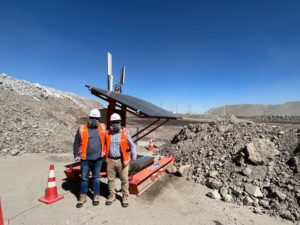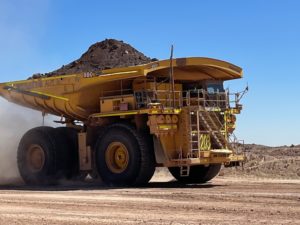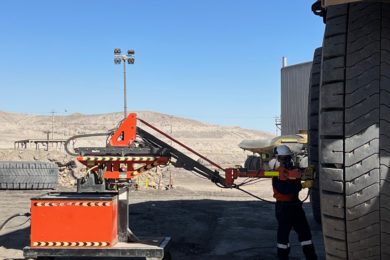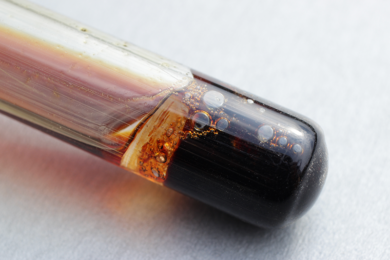In April 2023, IM had the unique opportunity to tour the operations of Kal Tire’s Mining Tire Group in Chile, with both Carlos Zuniga, General Manager of Kal Tire Chile, and Mario Gomez, Kal Tire Chile Service Manager, along with a number of their colleagues. This included visits to its repair, training and service hub in the La Negra industrial area outside Antofagasta, as well as its ground-breaking thermal conversion facility close by – which is pioneering large mining tyre recycling worldwide.
It is now managed by its joint venture with Japan’s Mitsui and will be the subject of a follow up article in IM’s August 2023 issue. Finally, it included a visit to Antofagasta Minerals (AMSA)-owned Minera Centinela, one of Chile’s largest copper mining complexes, where Kal Tire Chile has a full service, repair and retread contract.
As of March 2023, Kal Tire has more than 300 team members in Chile – of which many are tyre fitters. To give an idea of the scale of its operations in the country – it has numerous comprehensive service, repair and retread contracts of which Centinela is just one.
Looking at Centinela specifically, it is one of four AMSA mining complexes in Chile, along with Antucoya, Zaldivar and Los Pelambres, with Kal Tire also having a service and repair contract at Antucoya. At Centinela, Kal Tire began its first contract in 2015 so is now into its third contract with the mine. It has two main facilities – the largest one in the sulphides area and the second in the oxides area. They are located close to truck maintenance shops for ease of access to trucks when they come for routine maintenance and to allow liaison with the mine’s own maintenance teams – for example there are occasions where tyres have to be removed in the truck shop for better access to the truck engine or another part of the truck where there is a mechanical issue. The Kal Tire sites and some of the buildings are owned by the mine with some containerised offices and of course all the tyre handling and inspection equipment owned by Kal Tire. This is the normal procedure for these on-site tyre management contracts.
IM Editorial Director Paul Moore and Mario Gomez, Kal Tire Chile Service Manager, in front of the automated inspection station at Minera Centinela

Adjacent to the office areas are the main tyre stockpiles, which includes a separate area for tyres marked for scrap, plus another area that has tyres awaiting transport to La Negra for repair, used tyres and new tyres in stock, and other tyres awaiting a check to assess if they are repairable or not – once a week a Kal Tire repair expert comes from La Negra to the mine to do this. So really there are currently four types of tyre inspection at Centinela – on the truck via TPMS for pressure and temperature, visual inspection while on the truck, autonomously via the AI-based thermal imaging inspection and the detailed manual inspection both inside and out once the tyres are off the truck.
Minera Centinela alone has about 60 Kal Tire people, of which four are female tyre fitters, as well as a number of women in other roles. Removing and fitting tyres also has been made much less labour intensive using Kal Tire’s Gravity Assist System, which is its patented mechanical arm that allows technicians to weightlessly manoeuvre tools, such as 35 kg torque guns, to fit and remove wheel nuts.
Key site equipment at Centinela includes five OTR tyre handlers and a Titan220 jack. The most recent addition to Kal Tire’s site services is an autonomous tyre inspection station that is powered by Pitcrew.ai and its thermal imaging system of which one has been deployed and a second planned. Kal Tire manages all of the tyres onsite, with the exception of the new Llano pit where Phase 1 of the load haul operations are being conducted by a different mining contractor. Kal Tire therefore also manages the autonomous 980E truck tyres – though there are no special procedures for this as the trucks are always stopped in a special area and in non-autonomous mode when the tyres are removed or fitted.
Based on proactive tyre maintenance procedures, all tyre repairs are carried out at Kal Tire’s hub in La Negra, near Antofagasta. On site at the mine activities include tyre removal and fitting with rotation strategies, tyre pressure maintenance, tyre inspections and assessment, rim management, tyre inventory planning and forecasting as well as TPMS monitoring. Rotation is of course from front to rear but specifically they go from the front outer position 1 diagonally opposite to the rear position 6 first to avoid asymmetrical wear and from there to the other side inner rear position 4. The same is done in mirror image when starting with the front outer position 2. Typically two trucks are in the Kal Tire maintenance area at any one time but sometimes if needed it can accommodate three.
As stated, Centinela has both a sulphides area and oxides area – the sulphides area consisting of Esperanza and Esperanza Sur pits and the oxides area, consisting of the Tesoro Central, Encuentro Oxides, Tesoro Sur, Llano and Mirador pits. Aside from the mining contractor fleet, there are 17 autonomous 980E trucks running at Esperanza Sur and over 50 additional trucks at Esperanza and Encuentro Oxides which are a mix of Caterpillar 793 and 797 trucks plus Komatsu 930s. Centinela has three truck maintenance shops – one in the oxides area then two in the sulphides area – one for Esperanza and one for Esperanza Sur.
Autonomous Komatsu 980E running at Esperanza Sur

Centinela also uses Michelin’s MEMS4 TPMS across all the mining trucks and support vehicles but the TPMS provision and monitoring is part of Kal Tire’s contract with the mine. The MEMS4 tyre data is analysed in real time by supervisors at the Kal Tire facilities onsite as well as in the mine dispatch control room which is in the IROC in Antofagasta. Kal Tire is also able to see all the truck locations, having access to some of the mine dispatch system data. It is possible to filter trucks which have an alarm that are working and those with an alarm that are parked or in the truck shop.
Geofencing is used to prioritise trucks with known tread damage to go to the autonomous tyre inspection station for continual monitoring, which is located just before one of the main mine fuel farms. The trucks must also stop for fuel at least once a day. Overall, Kal Tire has four priority levels for tyres while they are running on the trucks – P4 means the tyre is in very good condition; P3 is a tyre with non-critical damage – which will be scheduled for a change to allow it to be repaired instead of scrapped; P2 means there is damage that needs inspection and the tyre condition is monitored until it becomes unsafe to continue to operate; with P1 meaning the truck is no longer safe to continue operating and the tyre problem needs immediate attention. The ideal is never to get the point where a tyre turns into P1.
Thermal imaging proves worth in productivity and safety
Centinela mine is notable as being the first mine in Latin America to use the mentioned Kal Tire autonomous tyre inspection station – which uses computer vision AI thermal imaging developed by Pitcrew.ai. The entire system is skid-mounted and fully autonomous – with power supplied via its own solar panels. It was installed and commissioned at Centinela as recently as May 2022.
The main system components are housed in a robust box that contains the hardware and thermal imaging camera itself. The truck passes by the camera and does not have to stop – it just has to slow to 15 km/h on its way to the nearby refuelling station. Currently, as stated certain trucks are prioritised to pass by the system but in future, Centinela plans to add another system near its other fuel farm at Esperanza Sur which would permit all the trucks in the sulphides area of the mine to be scanned in this way.
The inspection imagery is monitored by Kal Tire at the mine but is mainly assessed by the system software which uses AI to detect anomalies such as hot spots, belt edge and tread separations. It gives the position of the tyre concerned and gives it a priority rating, as mentioned from P1 to P4. These findings are also reported into Kal Tire’s TOMS (Tire & Operations Management System). The system then automates inspection work orders as part of a self-reinforcing feedback loop and then schedules tyre change work as necessary based on damage severity.
It allows remote monitoring of the tyres meaning less risk to Kal Tire people who now do not have to inspect tyres up close for damage as the system monitors damage in the tyres and crucially whether that damage is getting worse. Without it, staff have to inspect the trucks in the mine at key points such as when the truck comes in for maintenance, when it comes for refuelling or between shift changes. Also, it is not always possible to see tread or sidewall damage by eye. The thermal imaging is able to check every day the temperature difference and the damage dimensions to see if there has been any change, and if it is getting worse, it can be manually inspected or verified. So the truck is only stopped if a P2 or P1 tyre status is identified.
Today, it is a mix – the mine is using both inspection methods but in the future is likely to transition to relying more on the AI-based thermal imaging. Reduced inspection times also translates to improved productivity and fleet availability. Each truck avoids stopping for 30+ minutes of inspection every week, which all adds up when you consider the system is checking 200 trucks per week. It also picks up damage earlier, so more tyres can potentially be repaired instead of scrapped. And much of this is preventative repair rather than corrective repair – which itself is lower cost.
This is totally distinct from TPMS which is necessary to monitor the temperature and pressure inside the tyre. Damage in the outer part of the tyre due to separation will also generate heat but this will not initially be picked up by the TPMS system.










